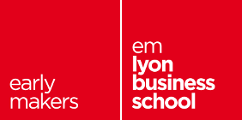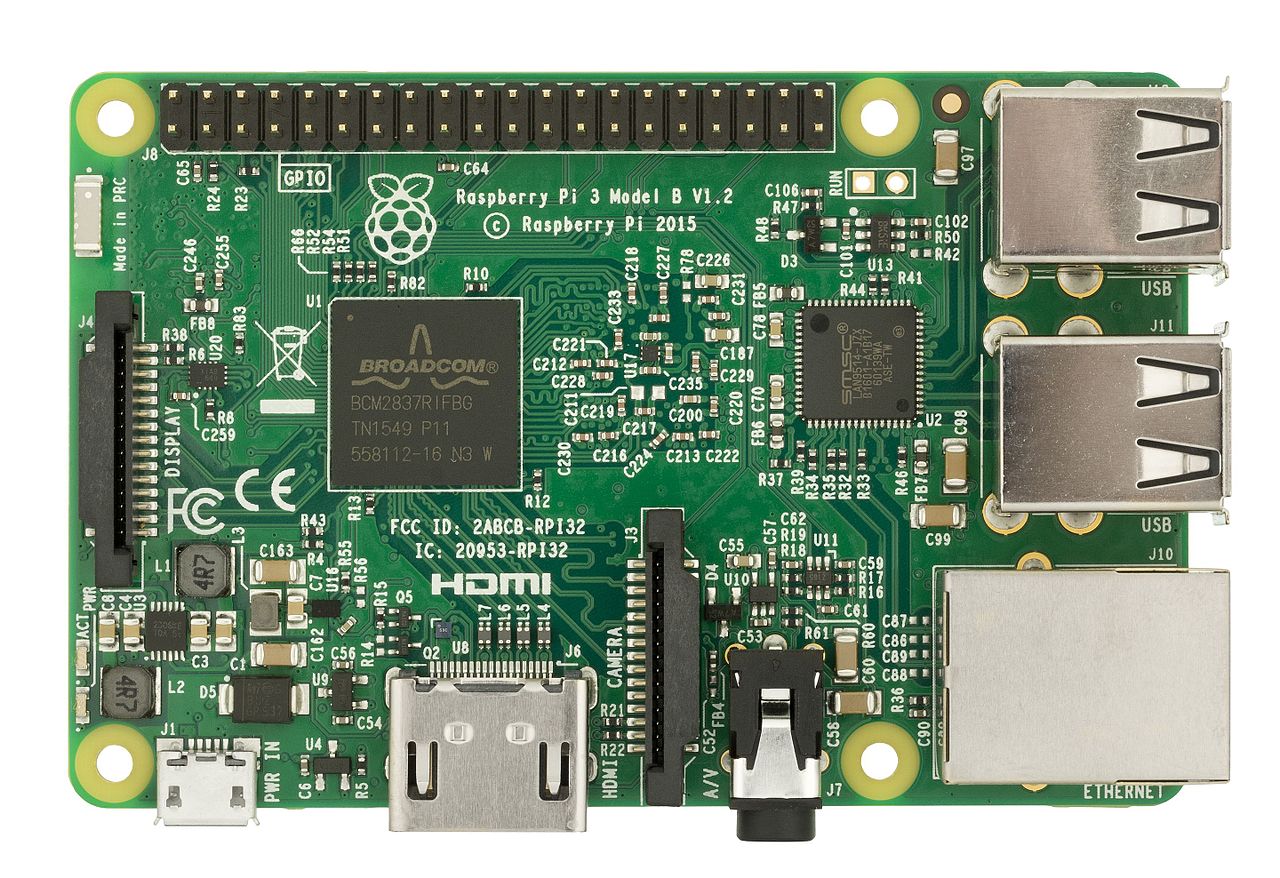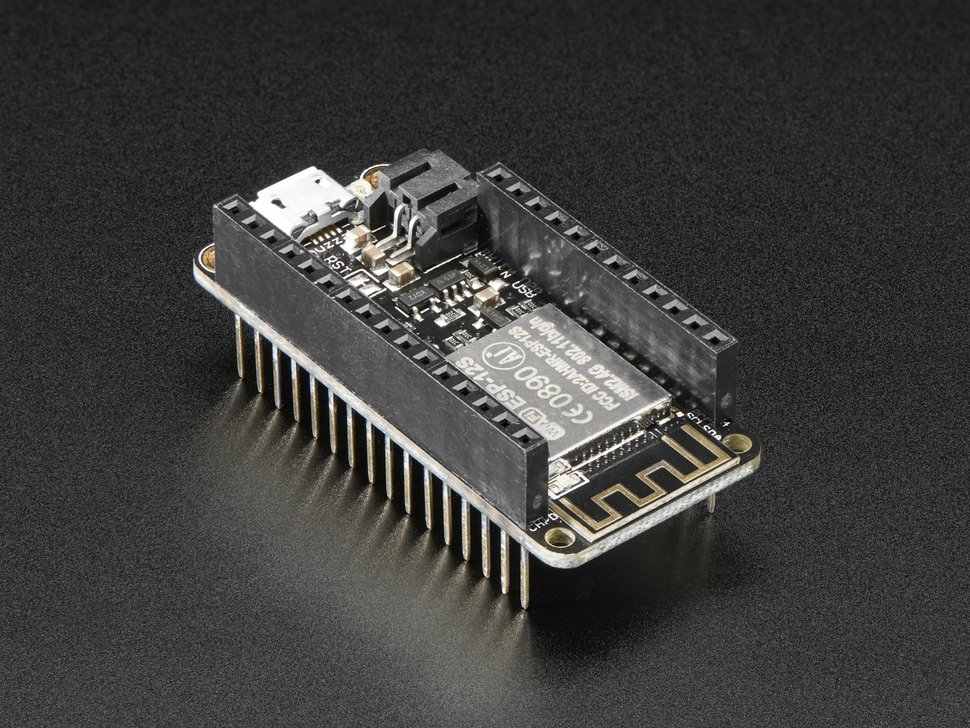Iot for entrepreneurs
Which board are we going to use?
2017-08-04
last modified: 2018-09-19
== !

What is a board?
A board is a small piece of plastic where electronic components can be added. Which components to add?
It is possible to put an entire small computer (but a small one!) on a board. The exact term for this small computer is a microcontroller.

The real size of this object is 8.5cm × 5.6cm (3.3 in × 2.2 in). It costs about 35$.
This picture represents a Raspberry Pi, where we see the green plastic board, electronic components on it: this is a microcontroller. As a shorthand, we will continue to call this a "board".
What are boards for?
The goal of boards is simple: they can provide the functionalities of a computer in a very small space because they are tiny.
For example, if you want to create a connected coffee machine (why not?), it would be weird to attach the coffee machine to this computer:

Instead, we can add a tiny board like the one above, which will do just what we need: maybe have just a small screen and connecting to our mobile phone via wifi (so that coffee can start when our alarm clock gets off, for instance).
And it will be cheap (just add 35$ to turn your coffee machine into a connected object!) and need just a little bit of electrical current (compared to a big computer).
Which board to choose?
There are litteraly hundreds of different boards. We choose here the Feather Huzzah:

Why the feather huuzah?
it is really tiny! 2 inches x 0.9 inch (51mm x 23mm)
it can connect to Wifi
it is cheap: 20$
There are other boards much smaller and cheaper, which can also connect to wifi. Why don’t we choose them?
They are much harder to use because:
they have no plug for a standard micro usb cable (remember we need some electricity to power the object!)
the programming language these boards use are difficult to learn for non specialists.
their documentation (all the documents explaining how to use them) is very technical, not very clear.
Said differently: the board we are going to use has clear documentation, is easy to plug, and it is easy to program. Why? Because it is a board following the principles of Arduino: easy to use, even for non specialists.
If you are interested, the whole story is here: it all started with a student in design in Italy, in 2003…
The end
Find references for this lesson, and other lessons, here.
 This course is made by Clement Levallois.
This course is made by Clement Levallois.
Discover my other courses in data / tech for business: https://www.clementlevallois.net
Or get in touch via Twitter: @seinecle